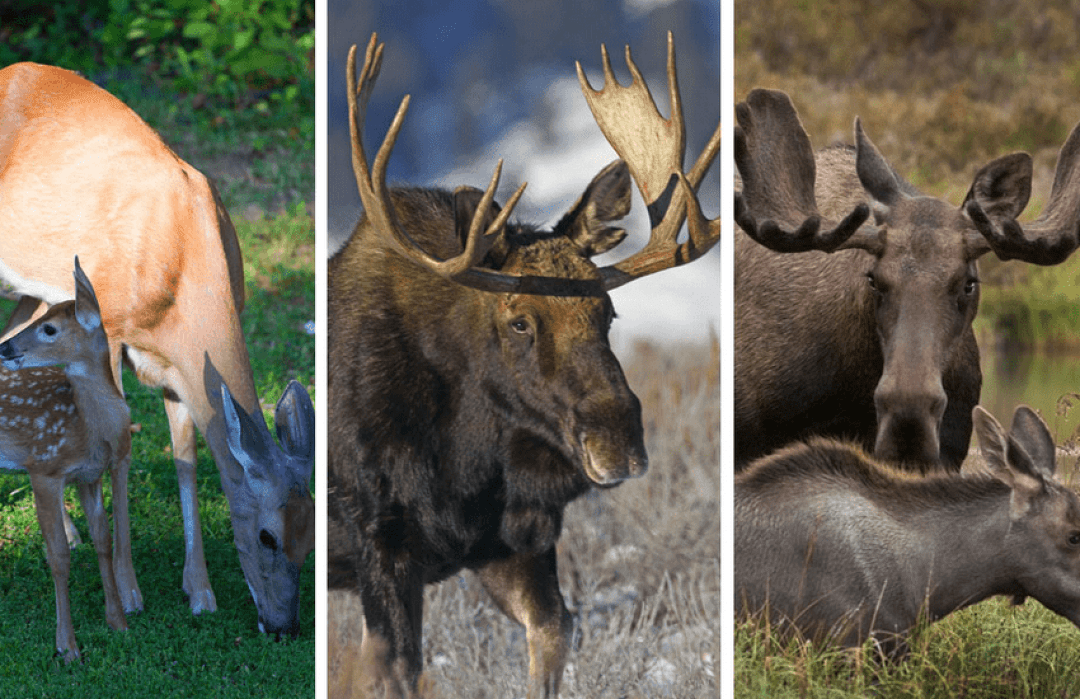Fish and Wildlife Commission approves CWD management hunt in several Region 3 hunting districts
White-tailed deer harvest in these districts to be extended from Dec. 15 through Feb. 15

The Montana Fish and Wildlife Commission last week unanimously approved a chronic wasting disease management hunt for white-tailed deer in several hunting districts in southwest Montana.
From Dec. 15 through Feb. 15, unused 2020 general deer licenses will remain valid for either-sex white-tailed deer harvest, and unused 2020 003-00, 331-00 and 399-00 deer B licenses will remain valid for antlerless white-tailed deer harvest within the CWD management hunt area. Now that the general deer hunting season has ended, no additional licenses can be purchased, except the 003-00 deer B license, which will be sold until Jan. 15, 2021.
Montana Fish, Wildlife & Parks staff proposed these adjustments for places where FWP’s surveillance efforts have found relatively high prevalence of CWD among white-tailed deer.
The primary goal of this CWD management hunt is to reduce densities of white-tailed deer in these areas in order to slow the spread of CWD among white-tailed deer and to mule deer, elk and moose. FWP also hopes to further improve understanding of CWD distribution and prevalence through continued testing of hunter-harvested deer.
The CWD management hunt will be in the following deer hunting districts and hunting district portions:
- HD320 – Those portions within the Jefferson River watershed. Those portions within the Madison River watershed are excluded.
- All of HD 322
- All of HD 324
- HD 325 – Those portions within the Blacktail Deer Creek watershed and north of Clark Canyon Creek. Those portions within the Beaverhead River watershed south of Clark Canyon Creek are excluded.
- All of HD 326
- All of HD 329
- HD 330 – Those portions within the Ruby River watershed. Those portions within the Madison River watershed are excluded.
- All of HD 331
- All of HD 340
As always, landowner permission is required before hunting.
CWD in southwest Montana
CWD is a contagious neurological disease that infects deer, elk and moose. It is always fatal, and there is no known cure. It was first found in Montana in 2017.
CWD was detected among white-tailed deer in the Ruby Valley in 2019. These deer are contiguous with white-tailed deer and moose throughout the Ruby, Jefferson, Beaverhead and Big Hole valleys. They are seasonally connected to populations of elk, moose and mule deer.
Hunters play a significant role in FWP’s management efforts for CWD. By late November, FWP’s surveillance of hunter-harvested white-tailed deer in southwest Montana found prevalence levels ranging from 8.3 percent in HD 320 to as much as 50 percent in a localized portion of HD 322, where about 2,000 white-tailed deer are routinely counted in spring.
Without population reductions, prevalence is expected to increase substantially in the coming years throughout these white-tailed deer populations.
Continued CWD sampling
Hunters who participate in the management hunt are encouraged to submit samples for CWD testing. FWP has provided resources to help hunters collect and submit samples for testing on their own. These resources can be found on FWP’s website by visiting https://go.usa.gov/xA3wH.
FWP will also provide limited staffing to assist hunters who need help collecting samples from their harvested animals. Beginning Dec. 21, CWD sampling stations will operate one day per week, from 10 a.m. to 3 p.m., at FWP offices in the following locations:
- Mondays: 730 N. Montana St., Dillon
- Tuesdays: 1820 Meadowlark Ln., Butte
CWD is not known to infect humans. However, the Centers for Disease Control and Prevention recommends that people not eat meat from infected animals and have their harvested animals tested before eating them if they were taken from an area where CWD is known to exist. For more information on CDC recommendations, please visit https://go.usa.gov/xAcnc.